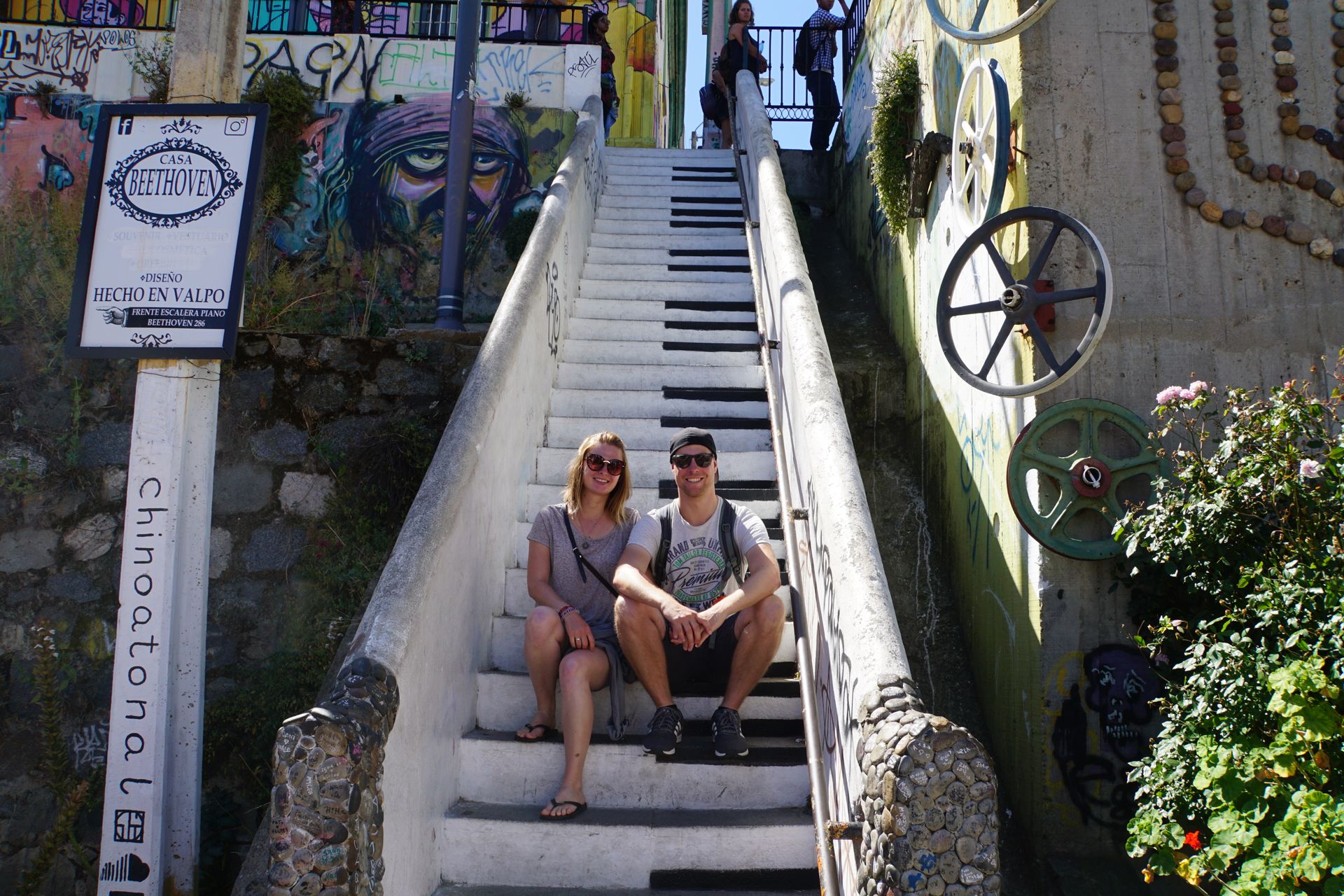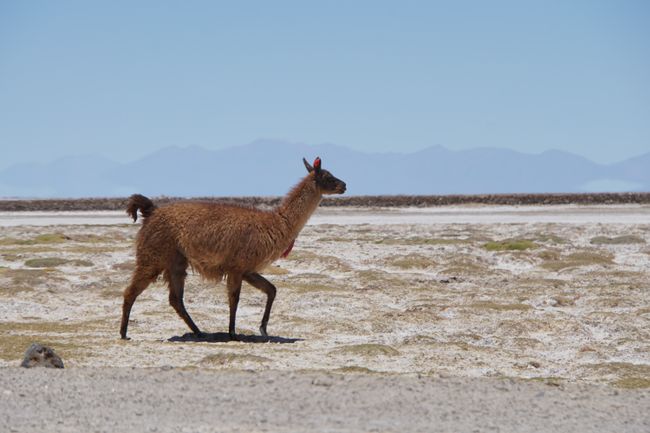
lamas-reisen
vakantio.de/lamas-reisen
Arequipa - the White City on the edge of the Andes
Ebimisami: 25.10.2018
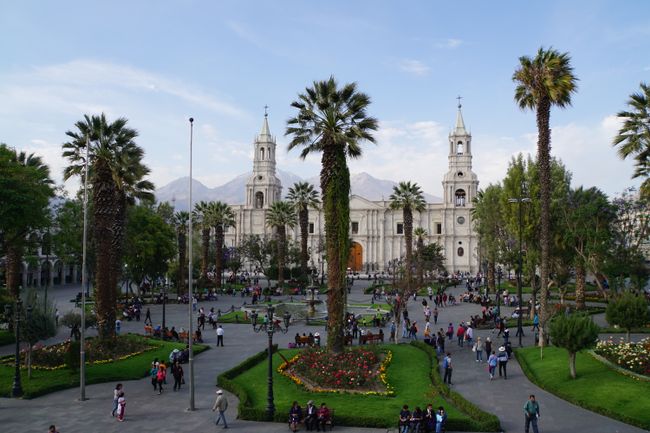
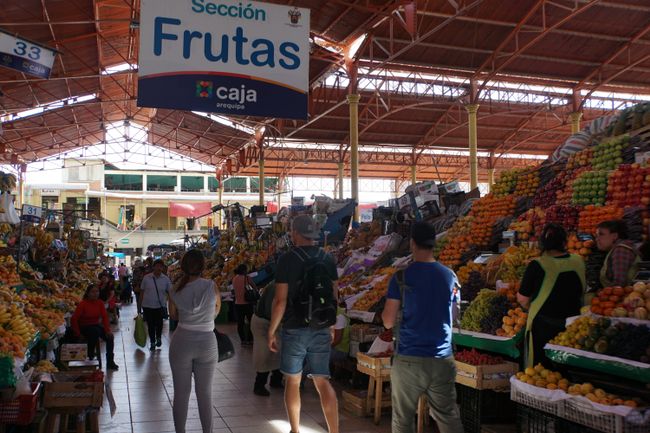
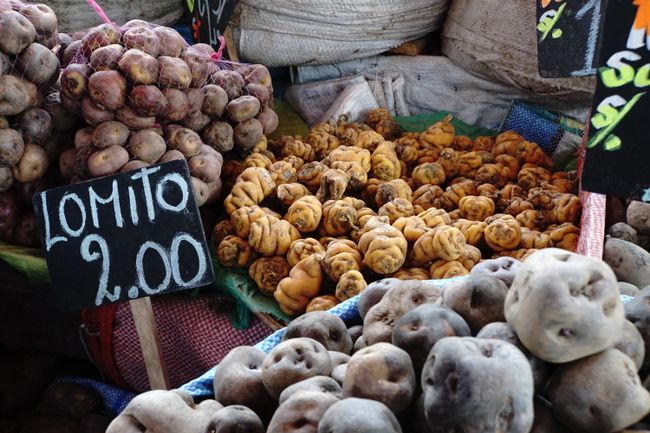
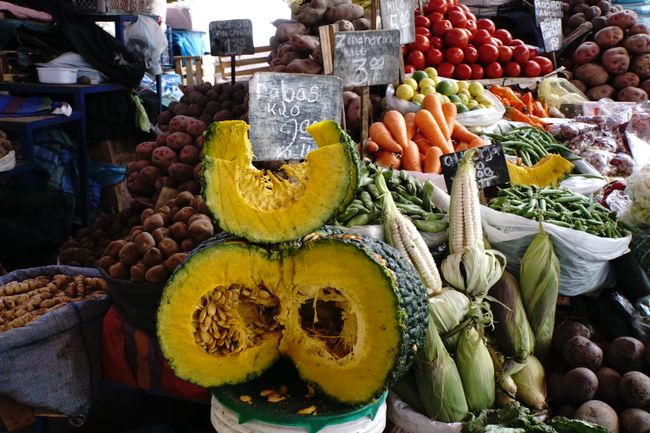
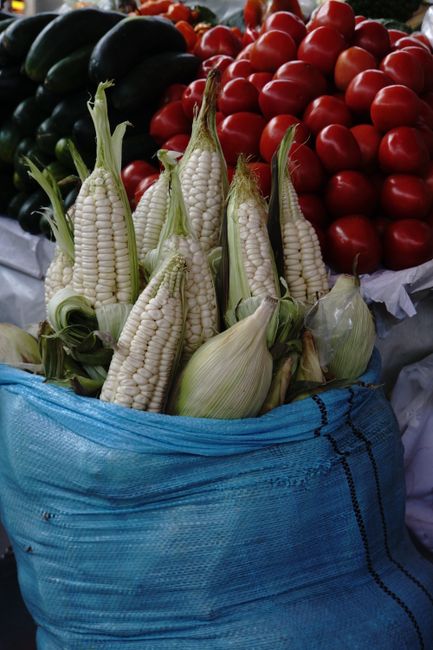
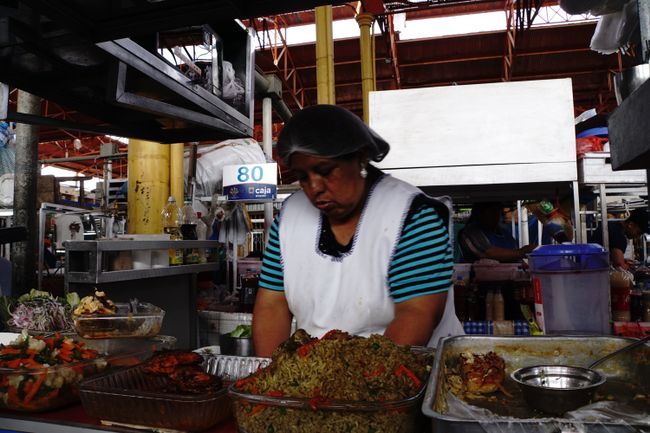
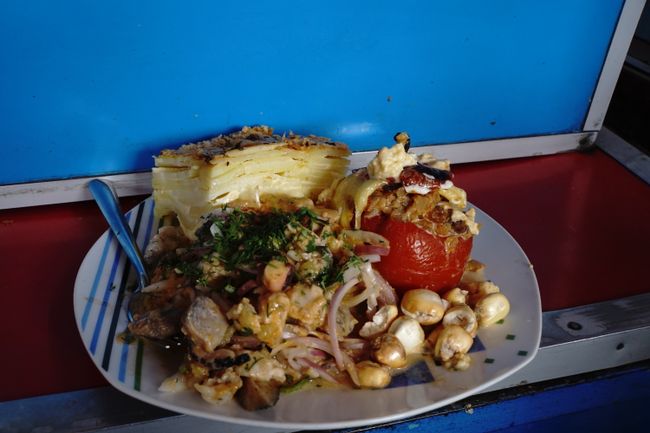
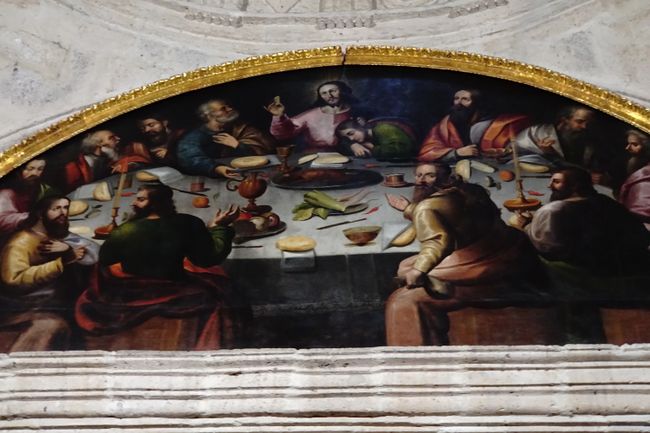
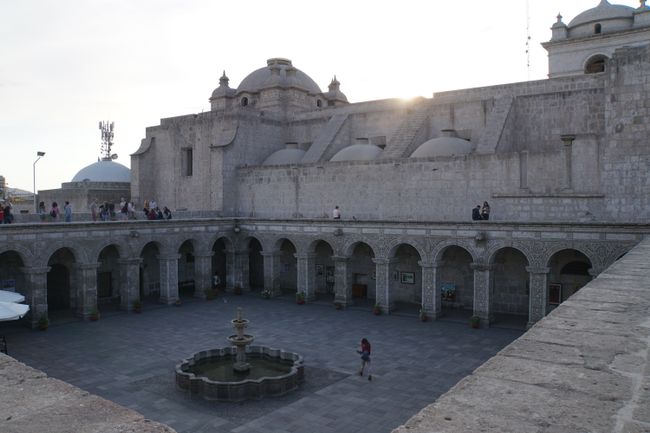

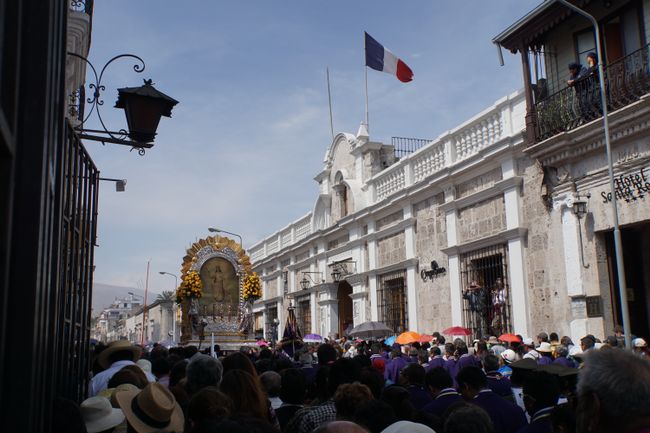
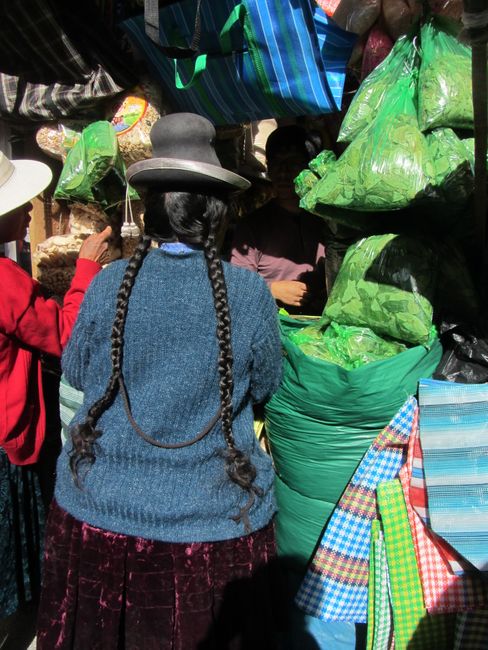
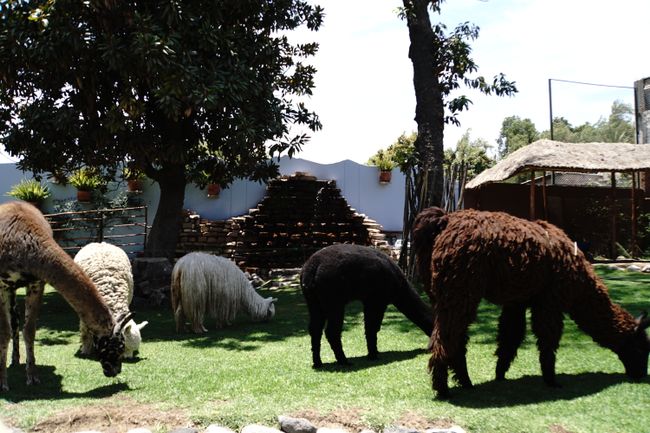
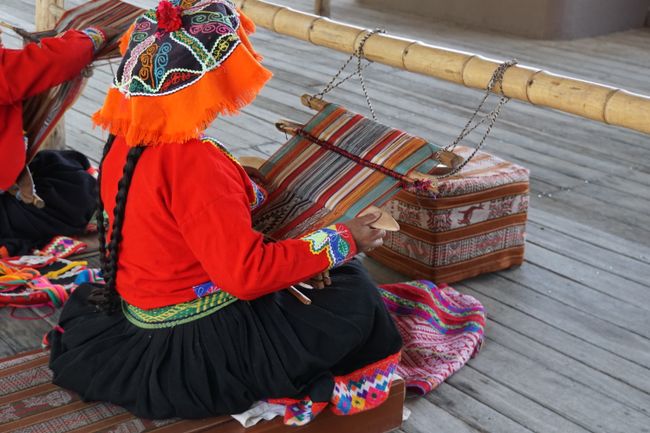
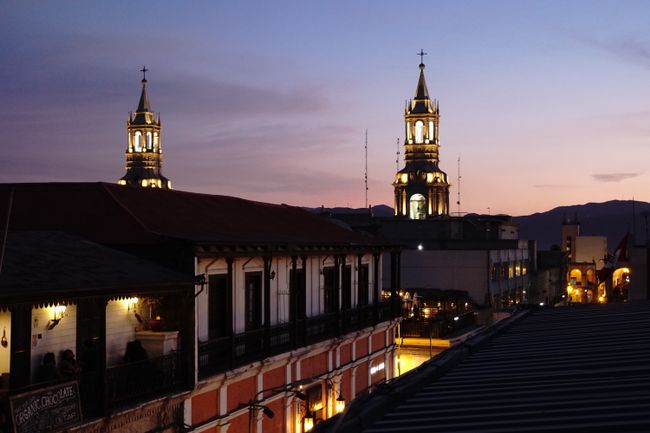
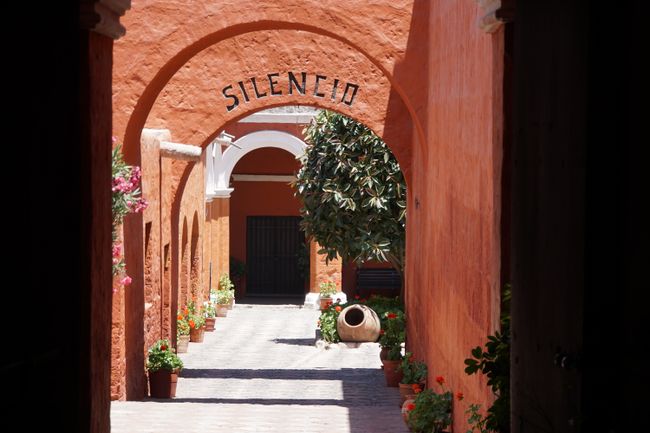
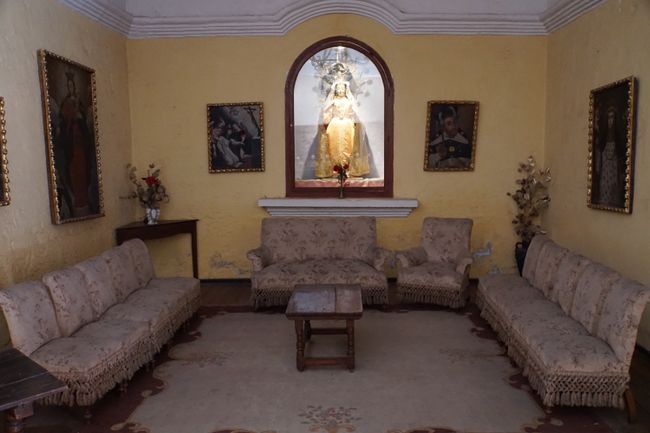
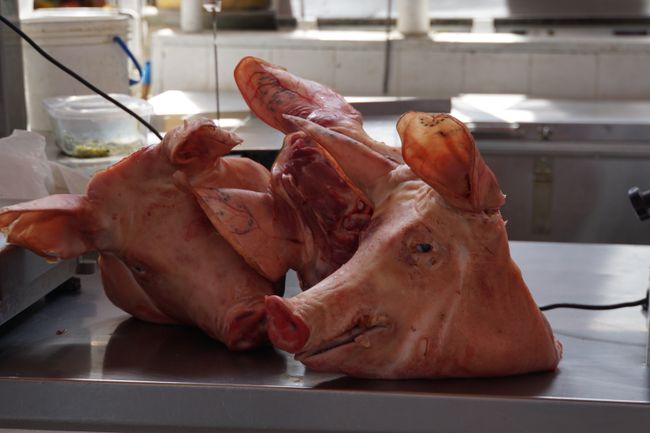
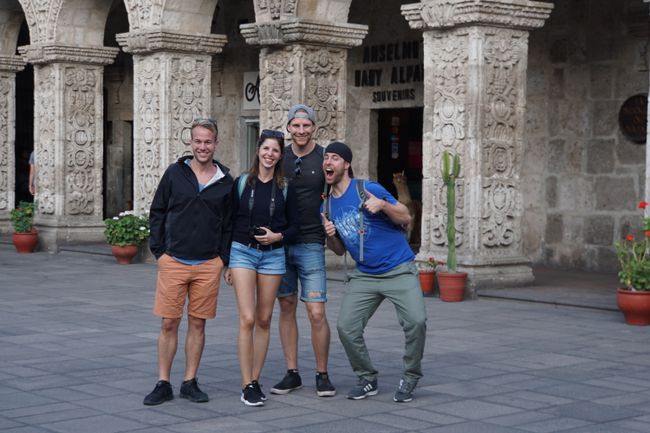
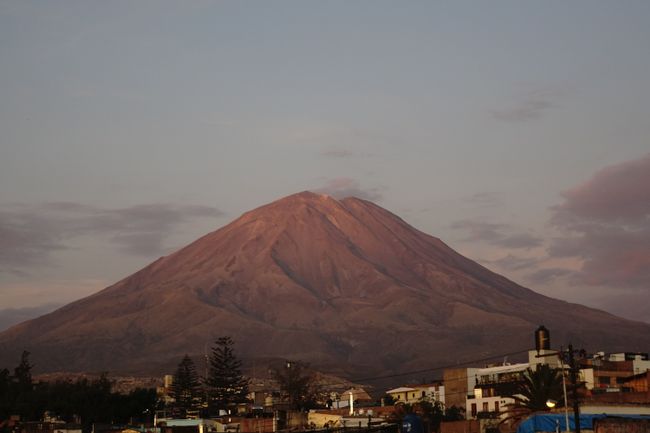
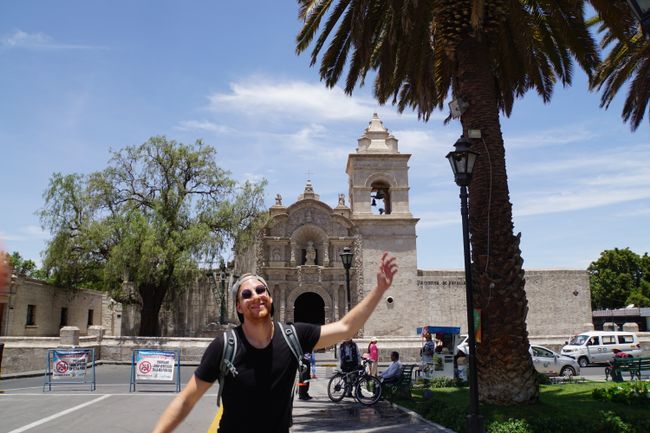
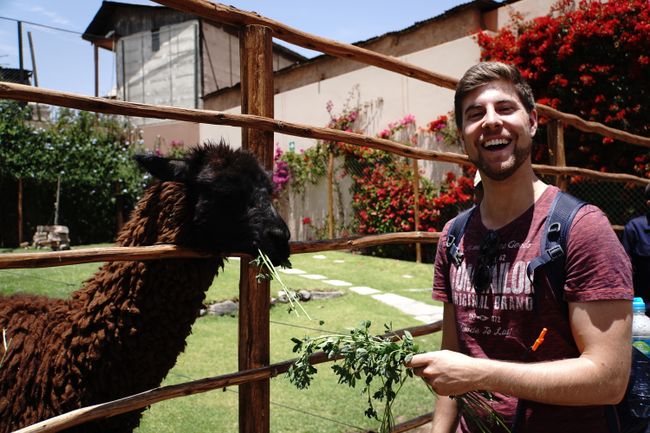
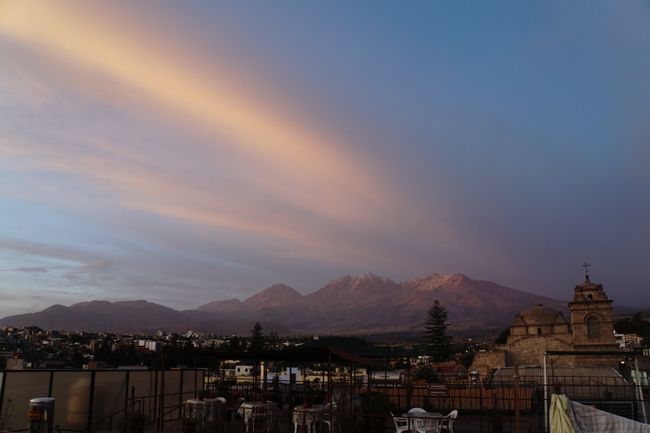
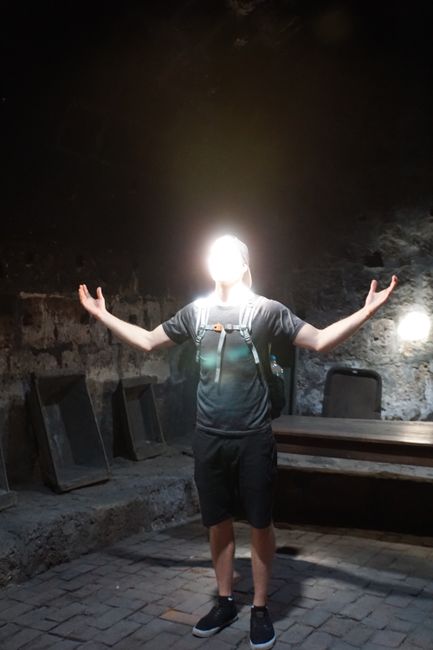
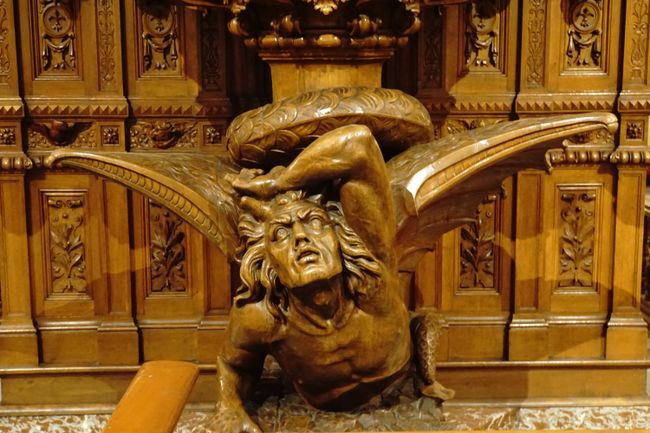
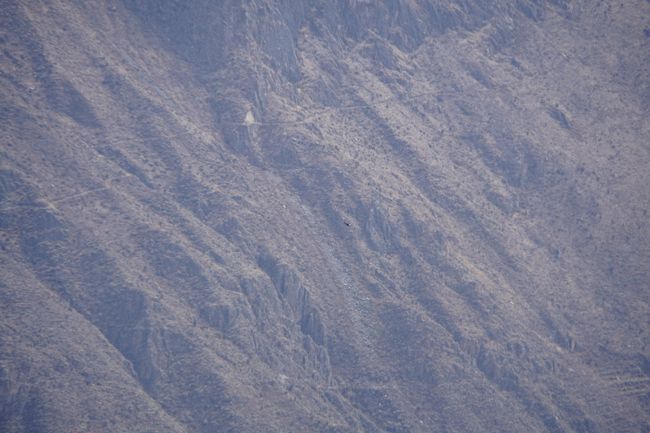
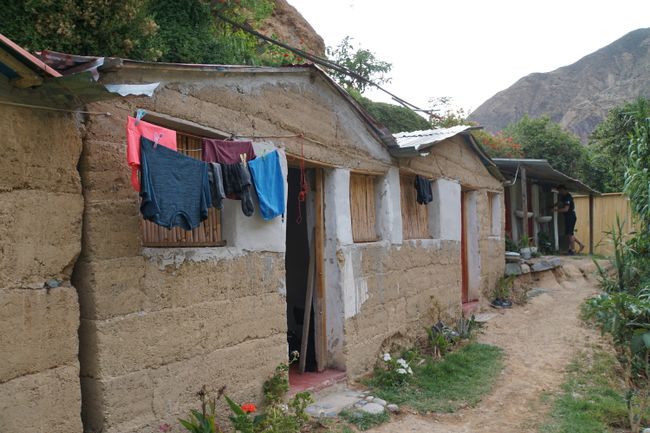
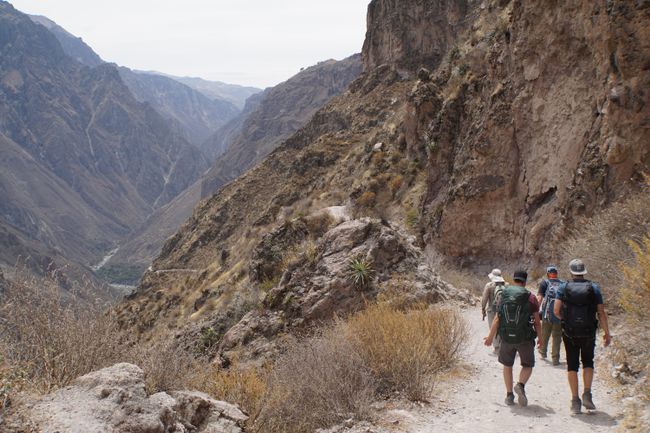
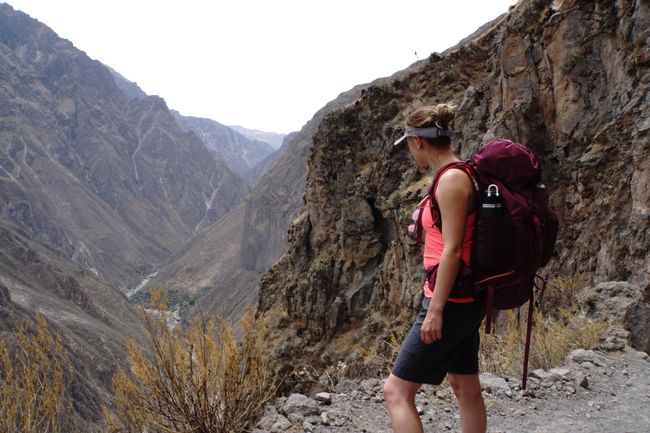
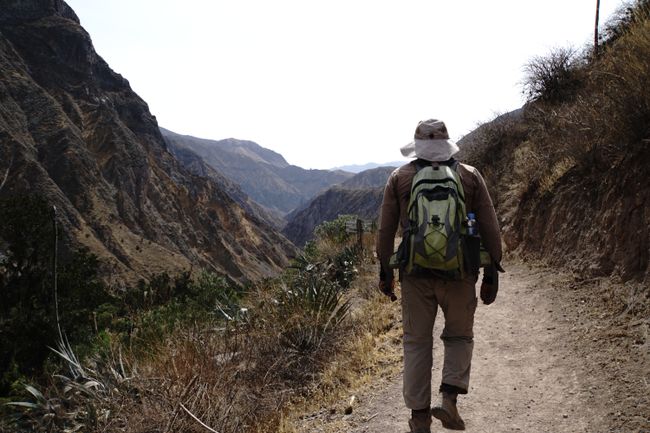
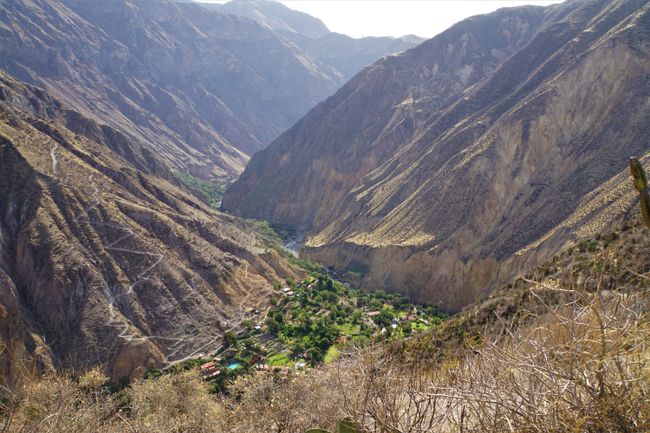
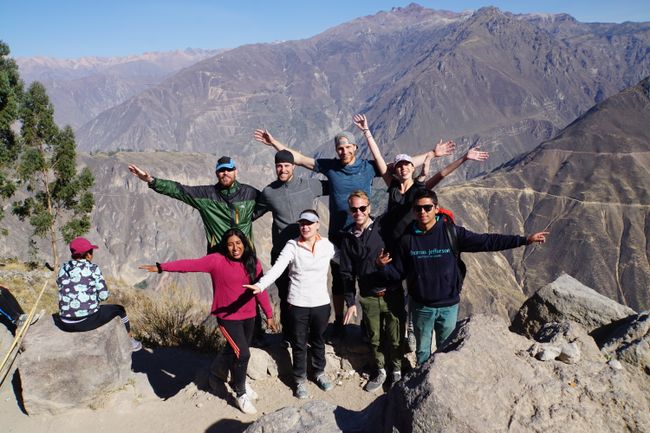
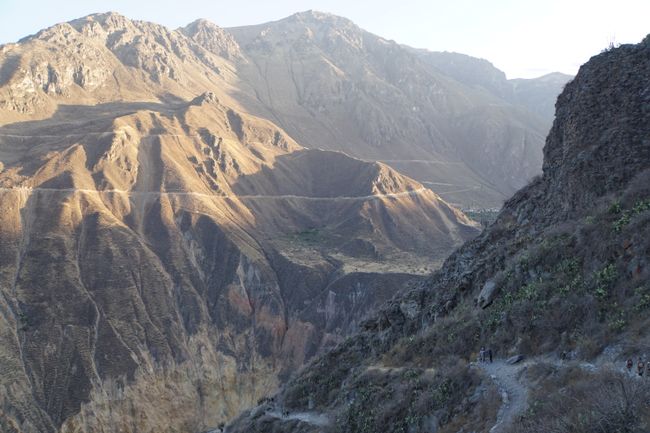
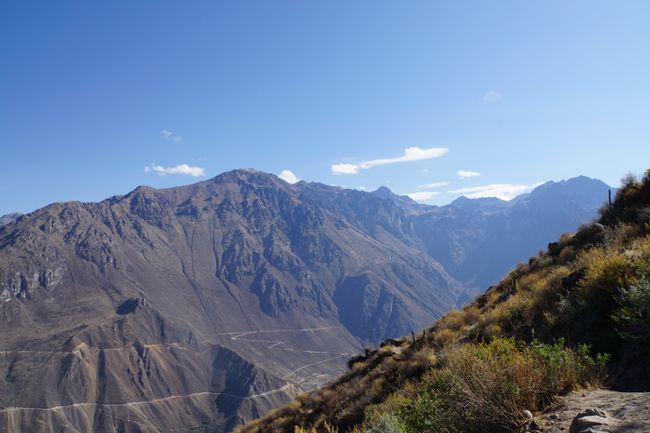
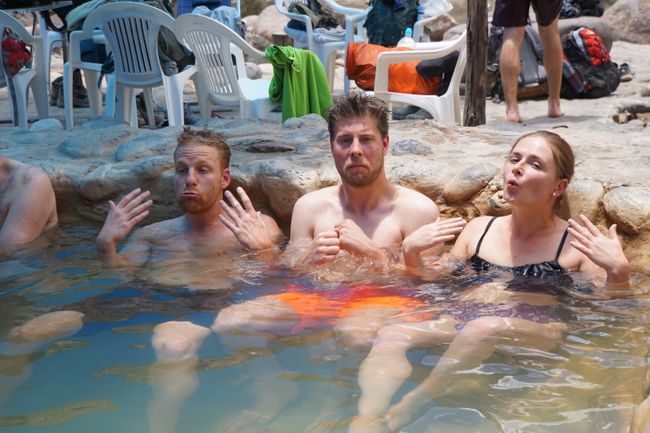
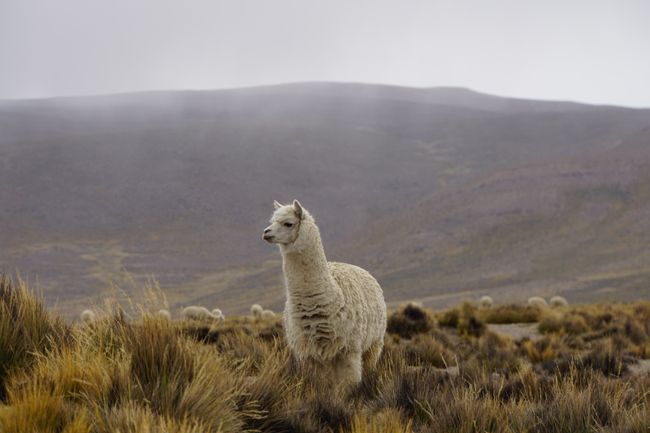
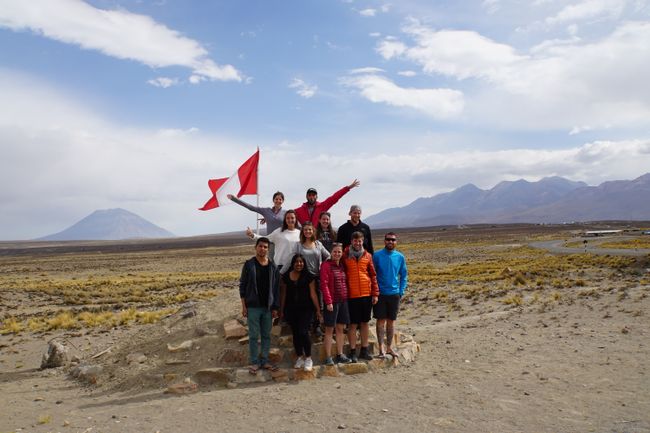
Abonnez-vous na Bulletin ya Sango
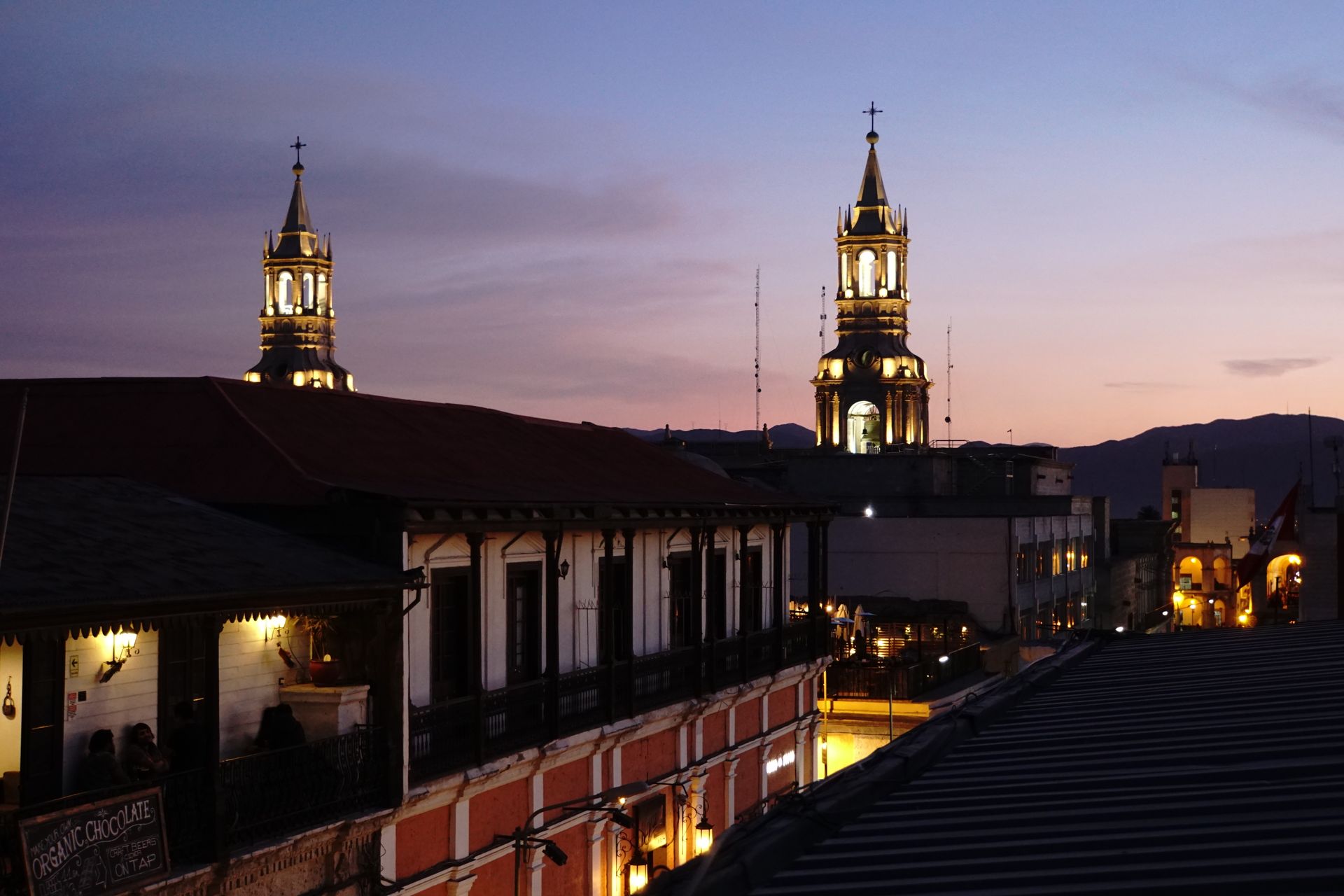
'Are quepay!' - I'm staying here - is what the Inca Prince Mayta Cápac is said to have exclaimed when he came to the area around Arequipa, spoiled by the mild and sunny climate. Surrounded by three volcanoes, the Misti (Mountain without a name, 5,822m above sea level), the Chachani Massif (6,057m above sea level), and the Pichu Pichu (Mountain Mountain, 5,665m above sea level), the city today covers approximately 650 km². With just under 1 million inhabitants, it is the second largest city in Peru and the economic center of the south. As beautiful as the scenery may appear, it is also dangerous. It is assumed that the still active Misti will erupt again within the next 200 years. Such an eruption would have devastating consequences, as there is no evacuation plan similar to Naples.

Although one might think that the nickname 'Cuidad blanco', meaning white city, could be due to the color of the sillar stone from which most of the buildings, especially in the city center, are constructed, this name actually refers to the city's colonial past. The Spanish, who wanted to escape Lima's mosquito-friendly climate, chose Arequipa as their refuge. Therefore, the predominant skin color of most Arequipeñas was white.
The old town of Arequipa impresses with its beautifully designed Plaza Armas with its white cathedral, near where our hostel was located. During an earthquake in 2001, the left tower was destroyed, but it was completely rebuilt by 2004.
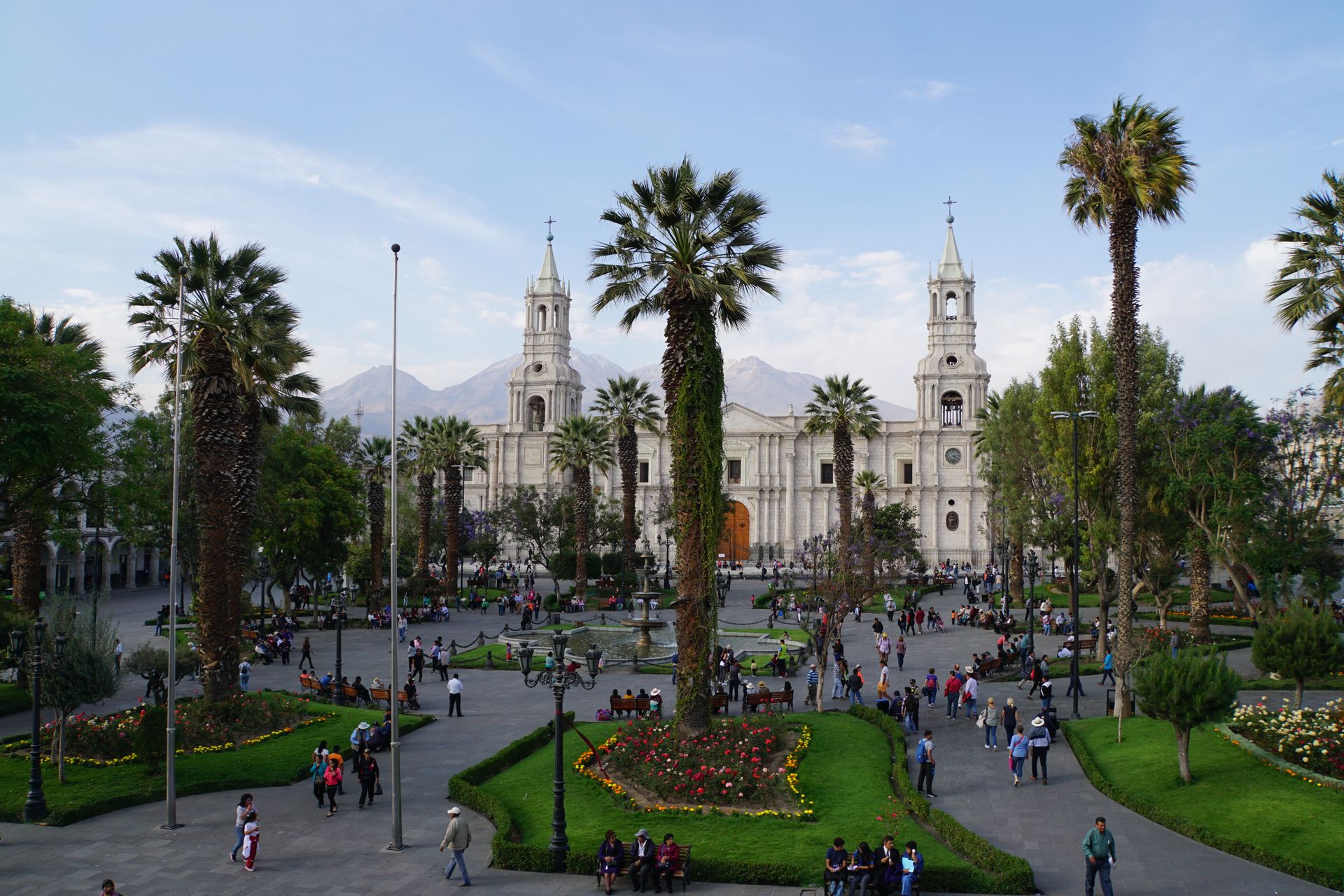
Fun fact: Although the interior of the cathedral is rather plain compared to South American standards, the elaborately decorated pulpit made of dark wood stands out. A French artist created a very seductive Satan here, probably the most beautiful devil in the world. As it is said to bring good luck to stroke his tail fin, the poor devil had to be fenced in. Only a pitiful stump of what was probably once a mighty fish tail remains...

Arequipa has a large market hall that was designed by Gustave Eiffel, and this is also evident in the steel beam structure of the roof. We particularly enjoyed the food mile here. After all, we got ceviche, sandwiches, and 'juices' (more like smoothies in Germany) at backpacker-friendly prices.
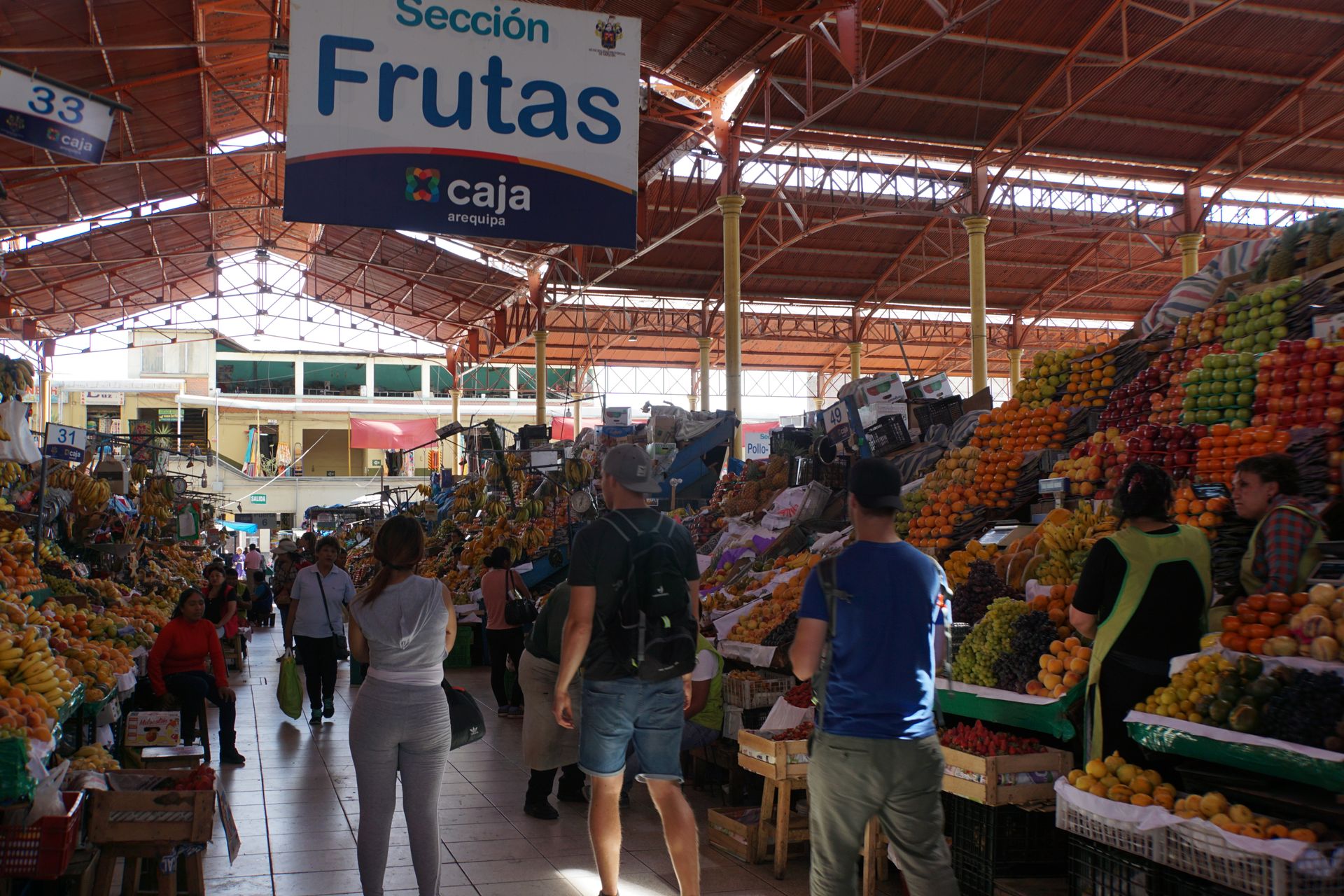
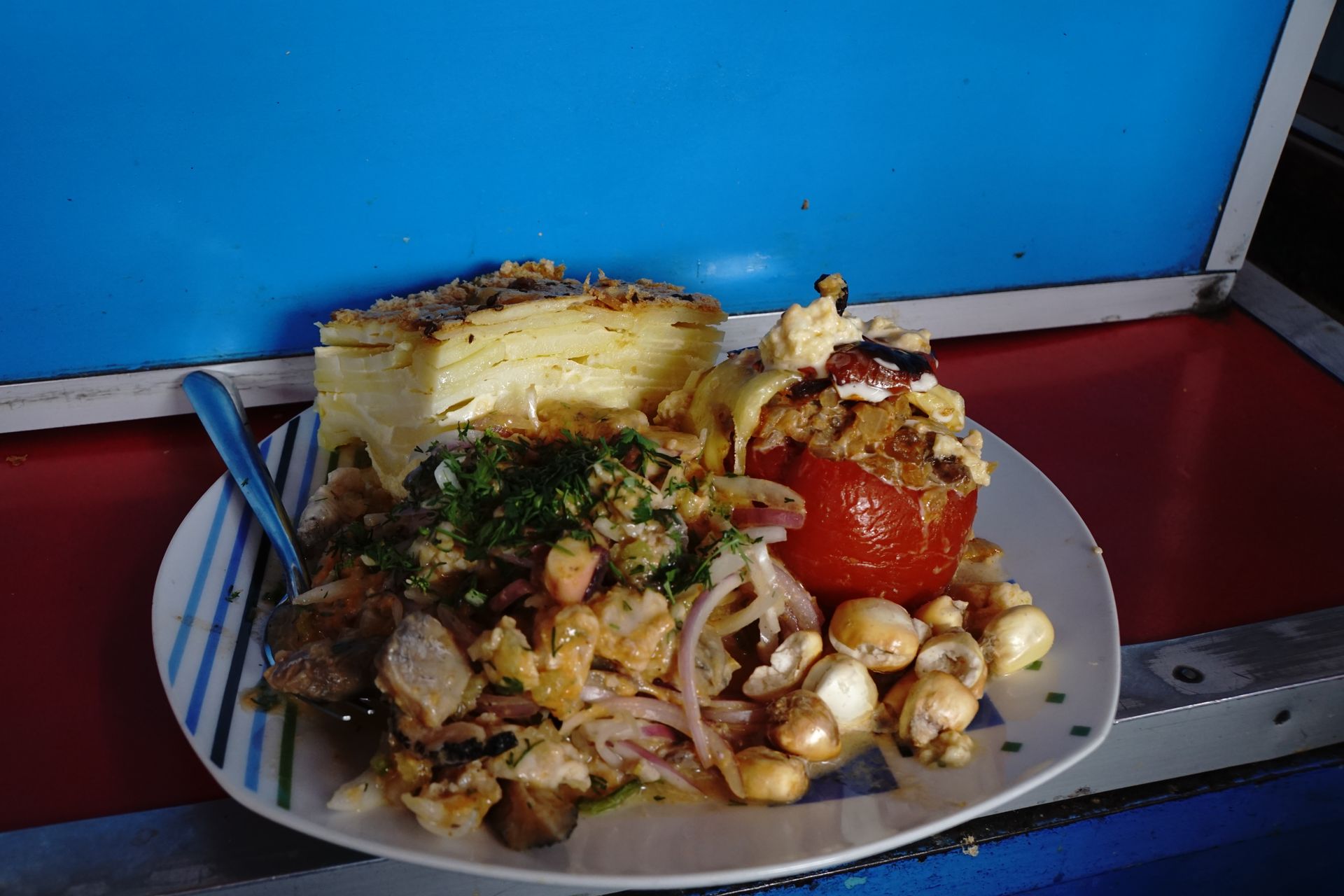
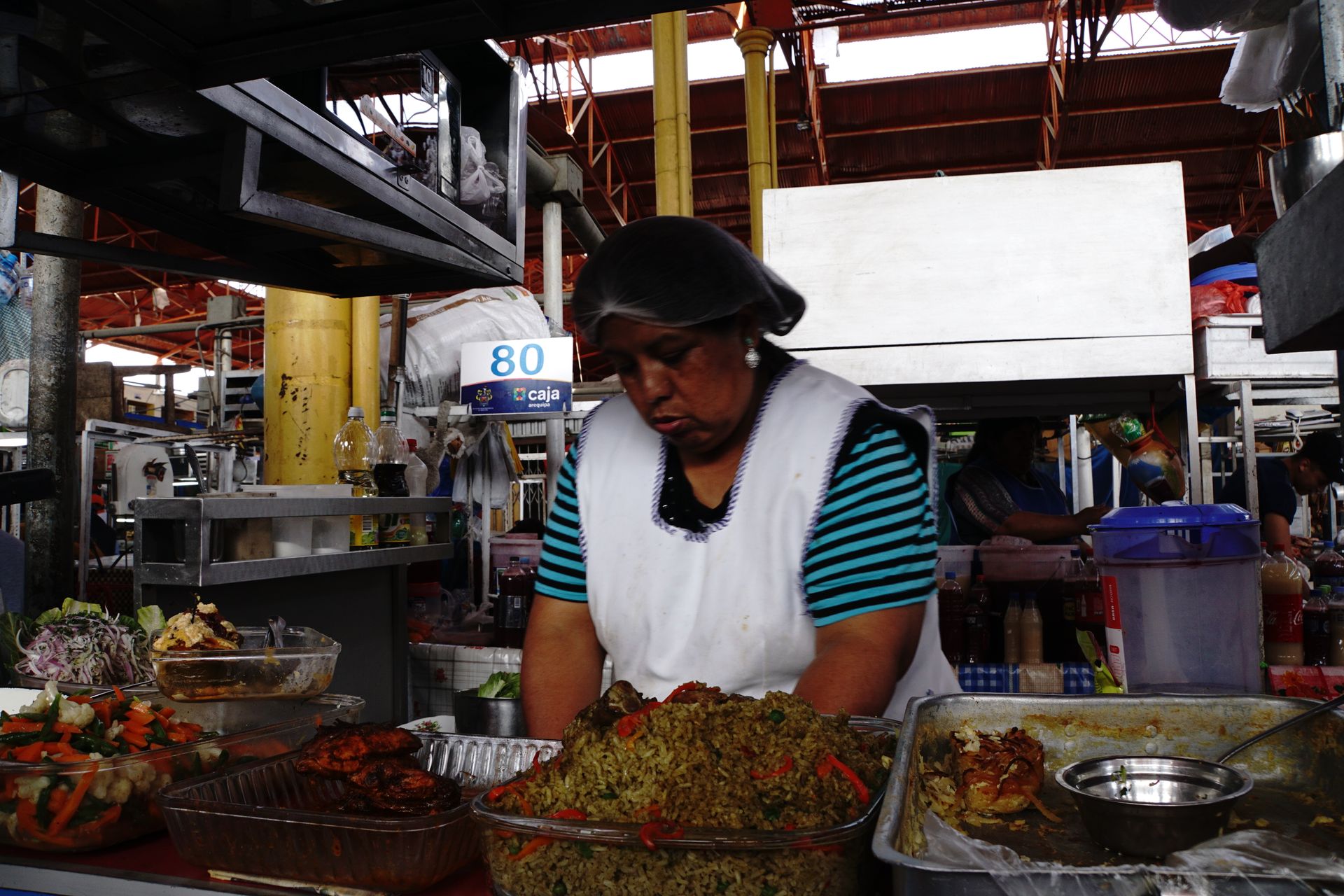
The selection at the market is incredibly diverse. There, you can get all imaginable everyday foods, such as fruits - familiar and unfamiliar to us -, vegetables of all kinds, breads, fish, meat, but also foods that are unusual in Germany, such as offal (including cow testicles), halved or quartered cow heads, and whole pig heads (all of course without refrigeration).

The small witch market is also fascinating, where you can find all sorts of herbs, tinctures, ointments, and teas, as well as dried llama fetuses. The latter are sacrificed to Pachamama (Mother Earth) before building a house and are said to bring luck and protect the house from collapse (in Cusco, we learned that the llama fetuses are stillborn and not cut alive from the womb, which reassured us!).
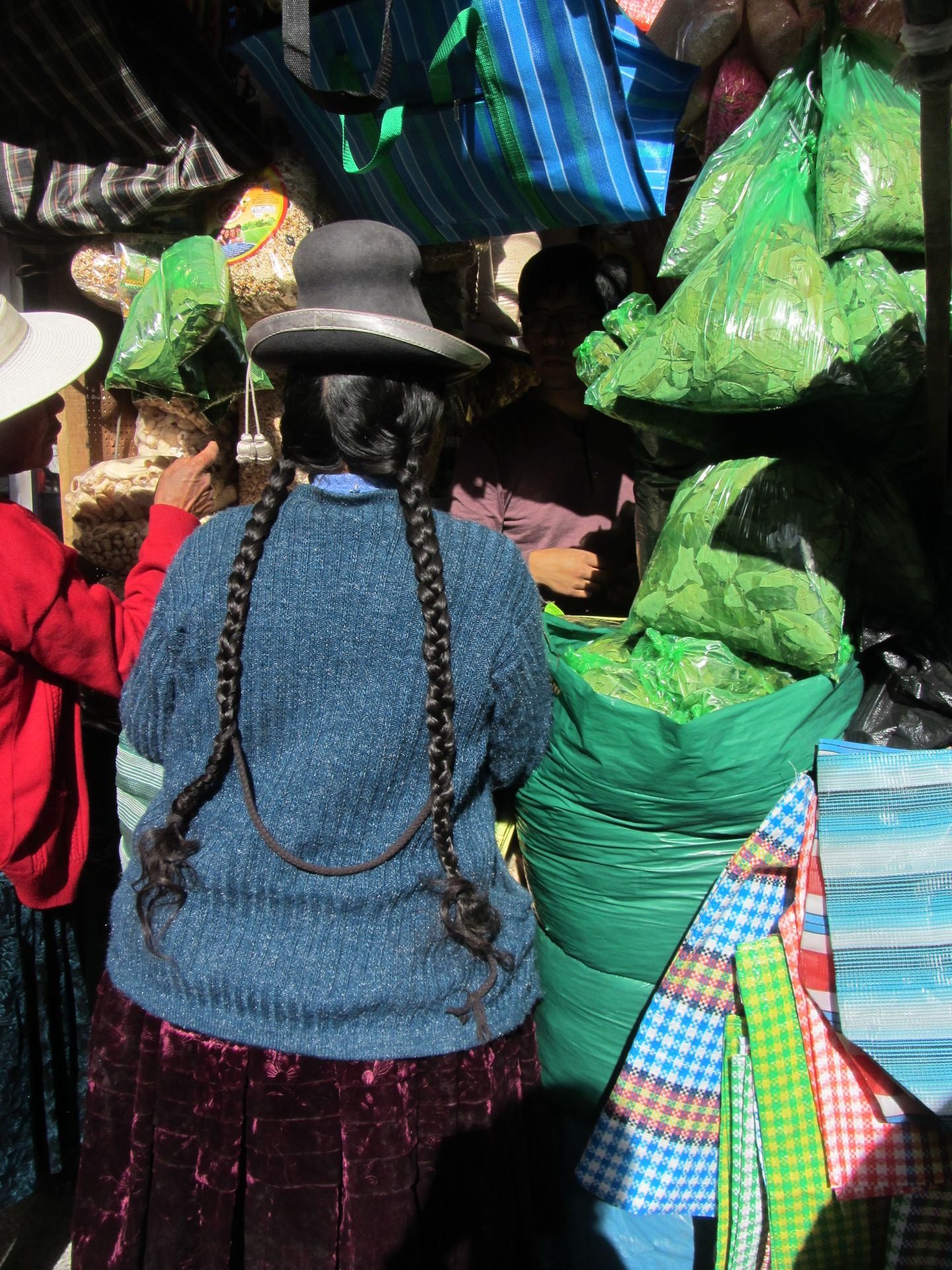
Arequipa is also the capital of alpaca wool. So there are many different stores here where you can buy alpaca products. Clothing made from baby alpaca wool, which comes from young animals up to two years old and is therefore particularly soft and comfortable to wear, is mainly offered.

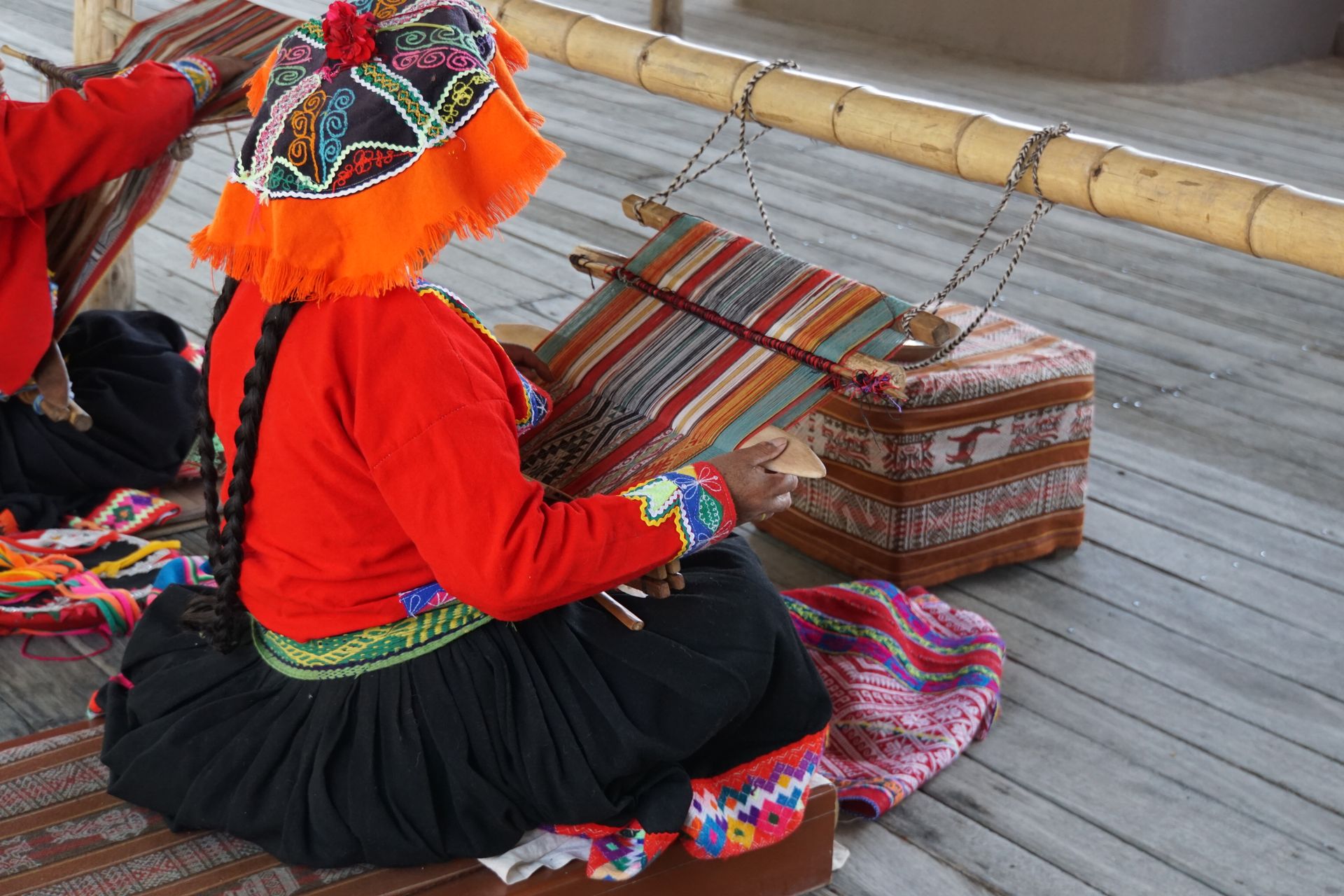
Not far from Plaza de Armas is a small Jesuit church called 'La Compañia' to admire. It is decorated on the outside in the Arequipeña style with baroque-mestizo-indigenous motifs (one can discover pineapples, pumas, and monkeys as well as the coat of arms of the Habsburgs in the elaborate stonework around the main portal), but inside, the abundance of gold and dark wood almost overwhelms us. The special highlight here: a somewhat different Last Supper with typical Peruvian dishes such as corn, chili, potatoes, and of course Cuy, the roasted guinea pig instead of bread.
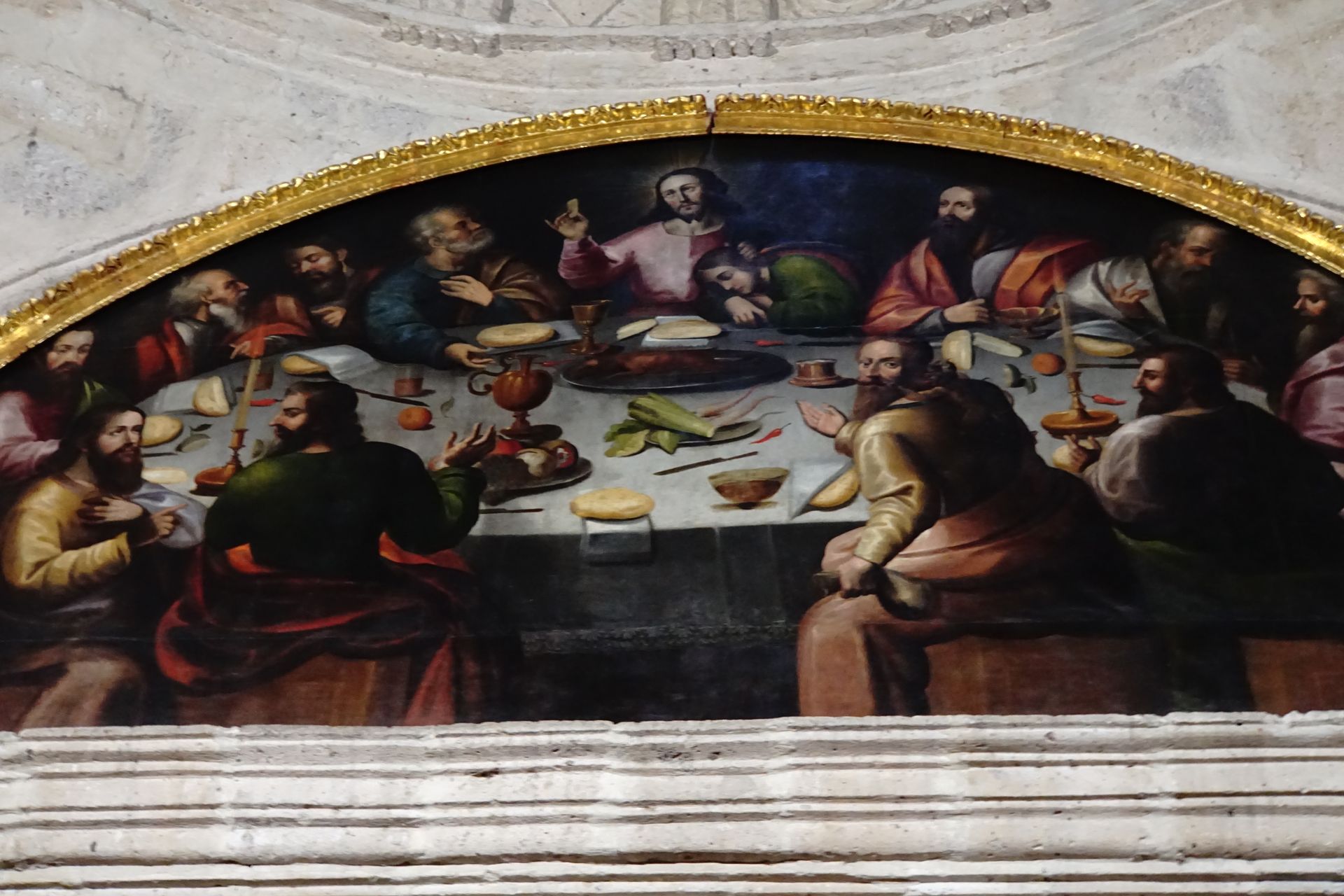
Arequipa is rich in churches and Spanish influences. This is especially evident in the Santa Katalina Convent, a city within the city. Traditionally, it was the home for the second-born daughters of the wealthy and powerful Spaniards. They did not fare poorly there.
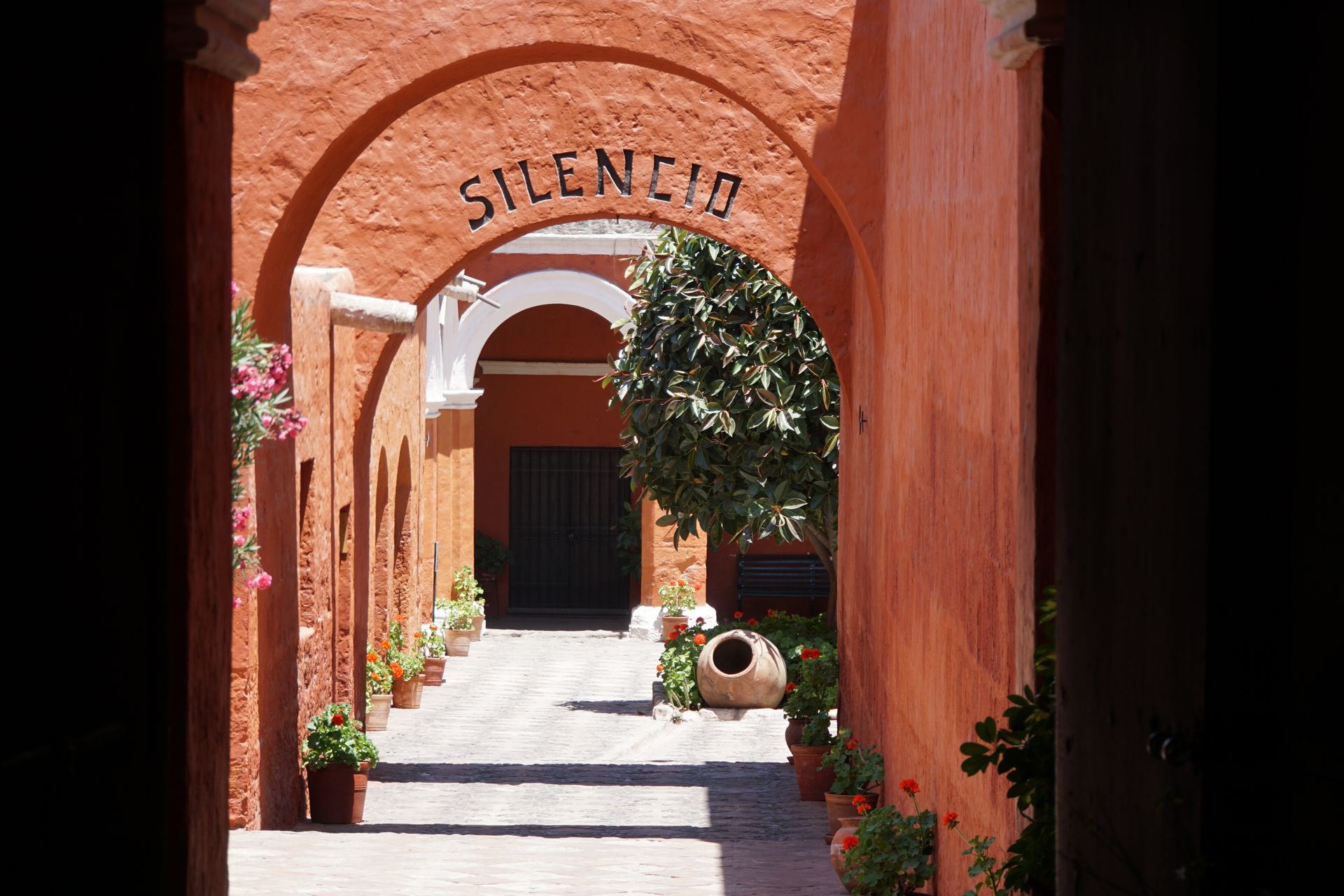
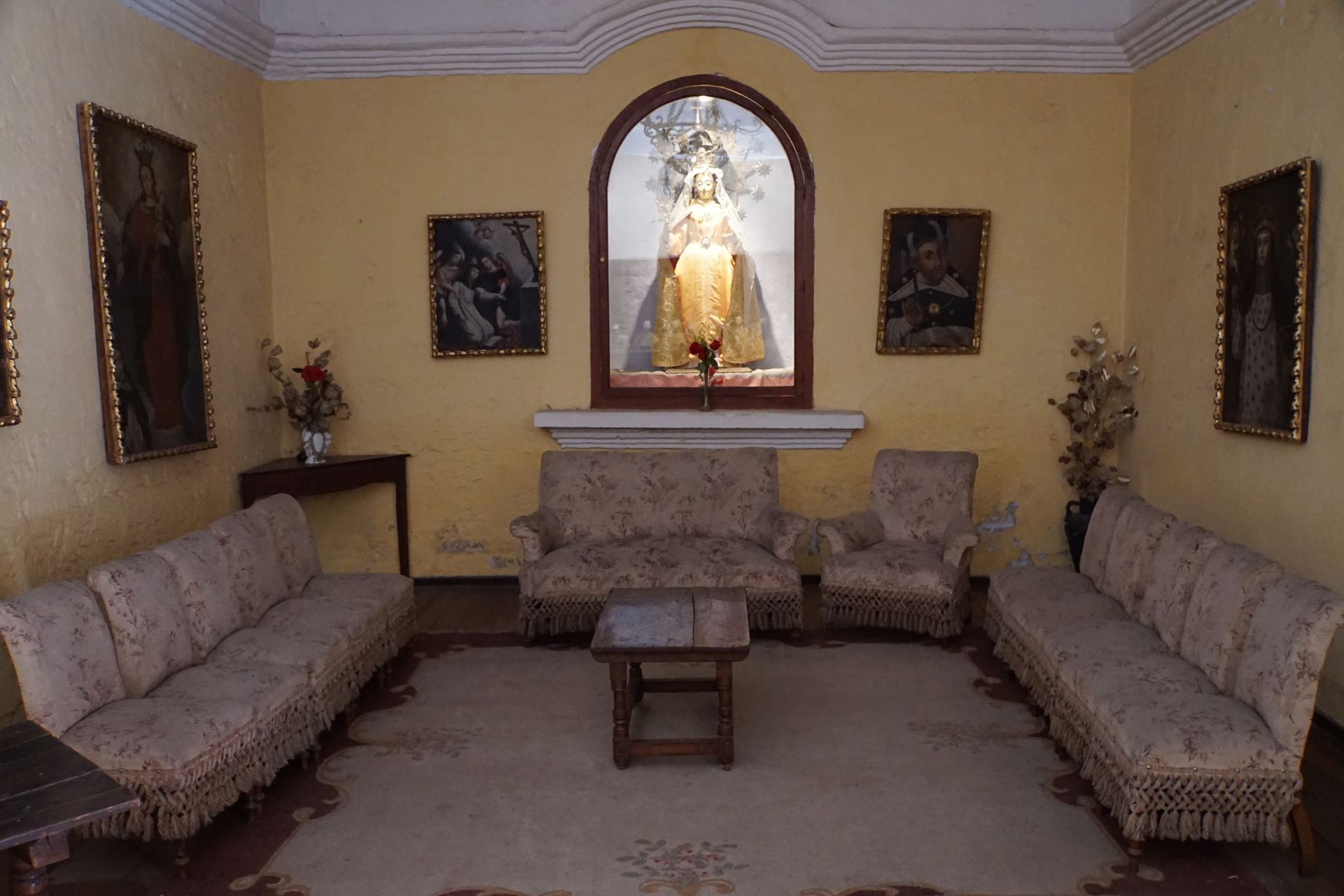
Aside from the fact that hardly any contact with the outside world was allowed, the up to 150 nuns lived here in their own apartments (up to 60m² !) with separate kitchens, elegant furniture, valuable porcelain and paintings, and up to four maids. So, they could endure it! We even felt a little sorry for the rich daughters who entered into seclusion at the end of the 19th century, since the then Pope abruptly put an end to their oh-so-refined life. From then on, the nuns really had to sleep in dormitories and cook for themselves! :-)
The indigenous history of the city also has its place in Arequipa. So on our last day, we finally got to 'meet' Juanita, the Ice Maiden, as our guide put it so nicely. Our visit to the Archaeological Museum, which mainly displays artifacts from the heyday of the Incas, culminated in a dark and cold room where the frozen and therefore incredibly well-preserved body of a young woman is displayed. Like Snow White, she lies in a glass coffin. Juanita is one of many child sacrifices that have been recovered in recent years. They were always buried on the peaks of high mountains covered with snow and ice. They were always accompanied by rich offerings, and their task was probably to appease Pacha Mama, Mother Earth, or Inti, the sun god, with their death. What seemed very strange to us, but somewhat reassuring: the children were apparently prepared for their role as intermediaries between humans and gods from an early age. They were trained in Cusco, the spiritual and geographical center of the Incas. From there, they embarked on a pilgrimage across the Inca Empire to the summits of the respective sacrificial sites - in sandals! Doped with intoxicating plants and copious amounts of chicha, the corn beer, we can cling to the notion that death eventually came quickly and painlessly.
Arequipa is the starting point for a trip to the second deepest (according to Wikipedia) canyon in the world - the Colca Canyon - and is also home to the largest bird in the world, the Andean condor.
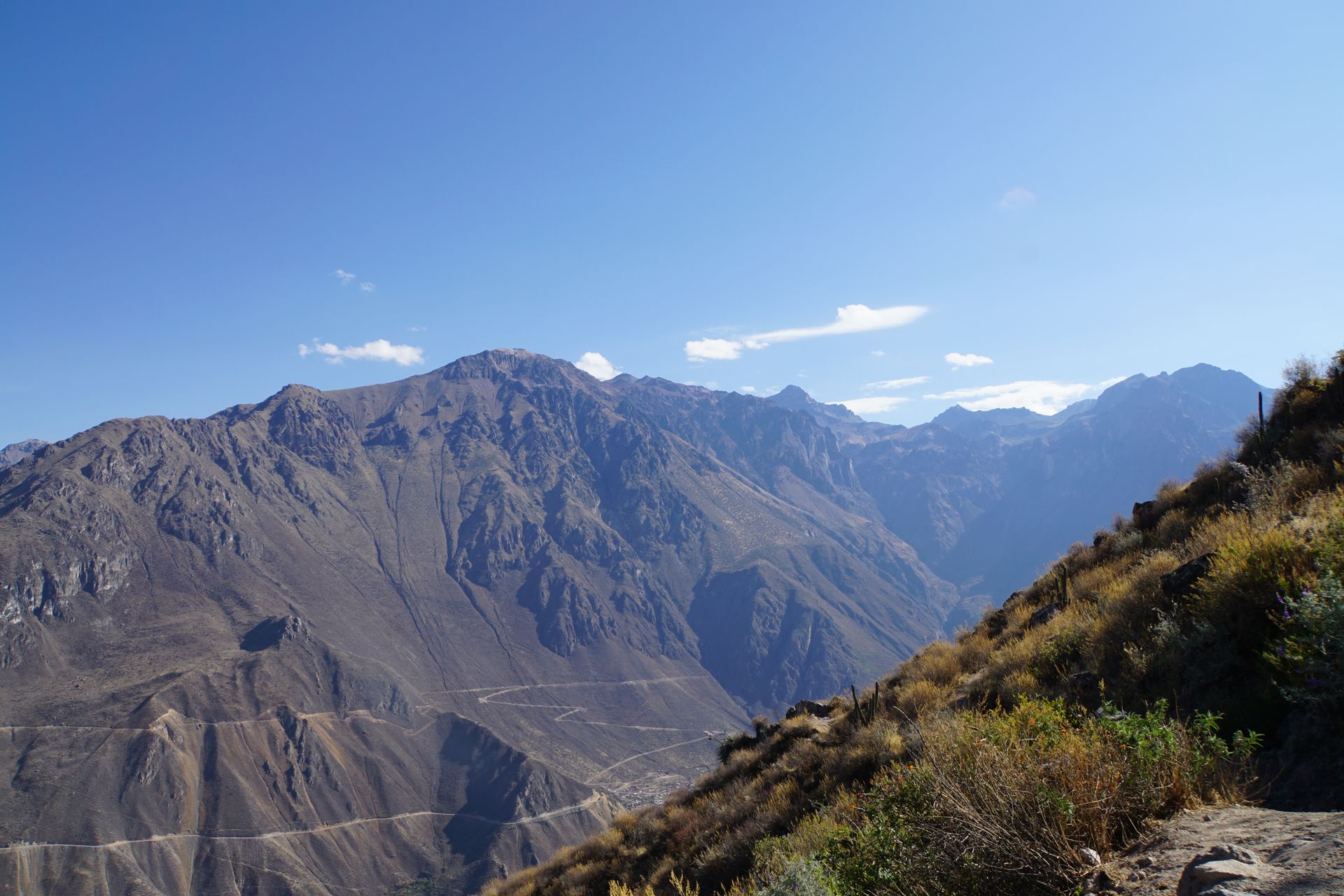
Early in the morning at 3:00 am, we were picked up at the hostel and first drove for 4 hours until we took a short breakfast break on a small farm (where we petted Lukas, the baby alpaca :)). Then we went to Cruz del Condor, from where, if you're lucky, you can catch a glimpse of the Andean condors. We had less luck and only saw a condor in the distance, but at least we saw one!
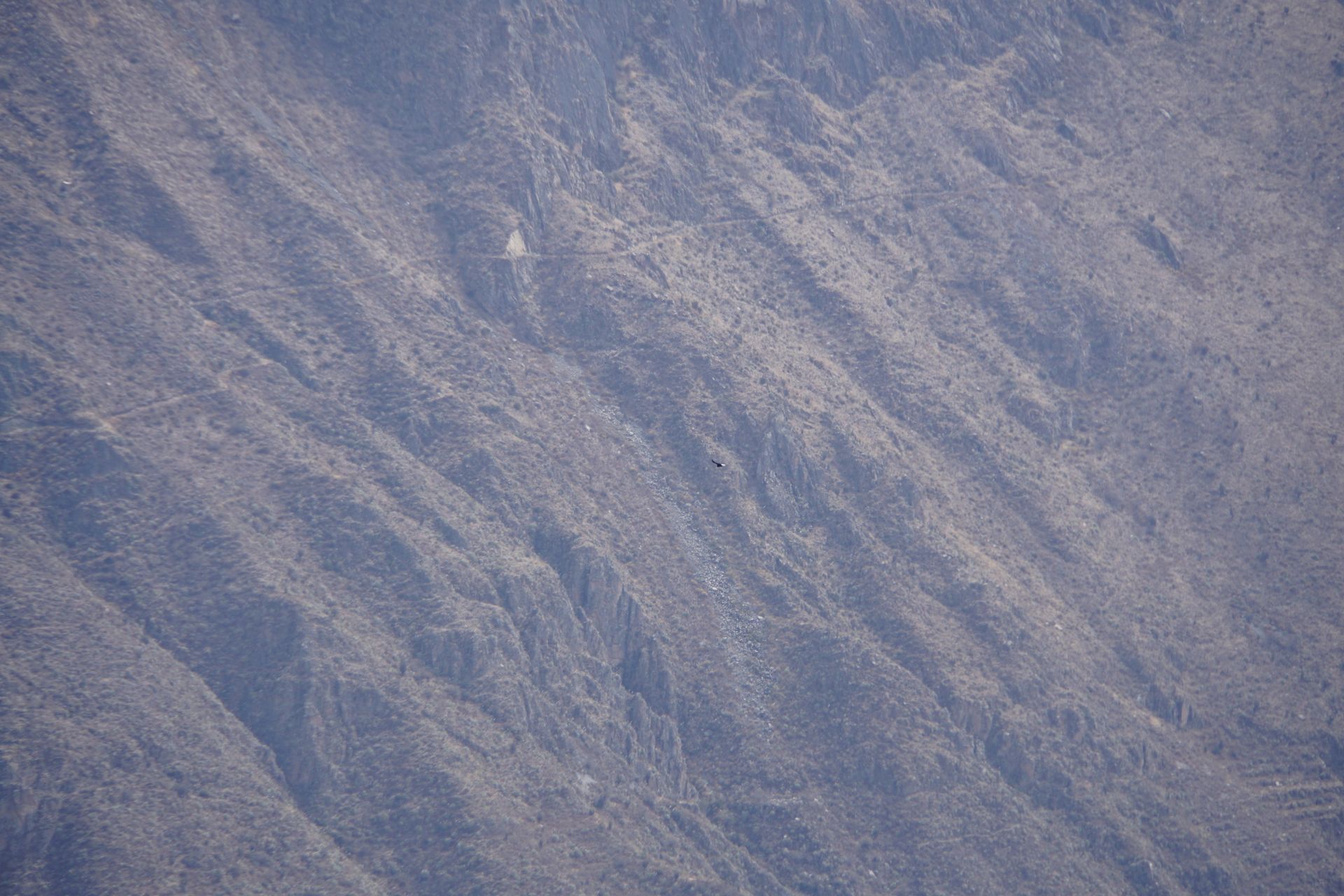
Another half hour away was the starting point for our 2-day trek. On the first day, we descended into the valley, where we spent the night in small lodges.
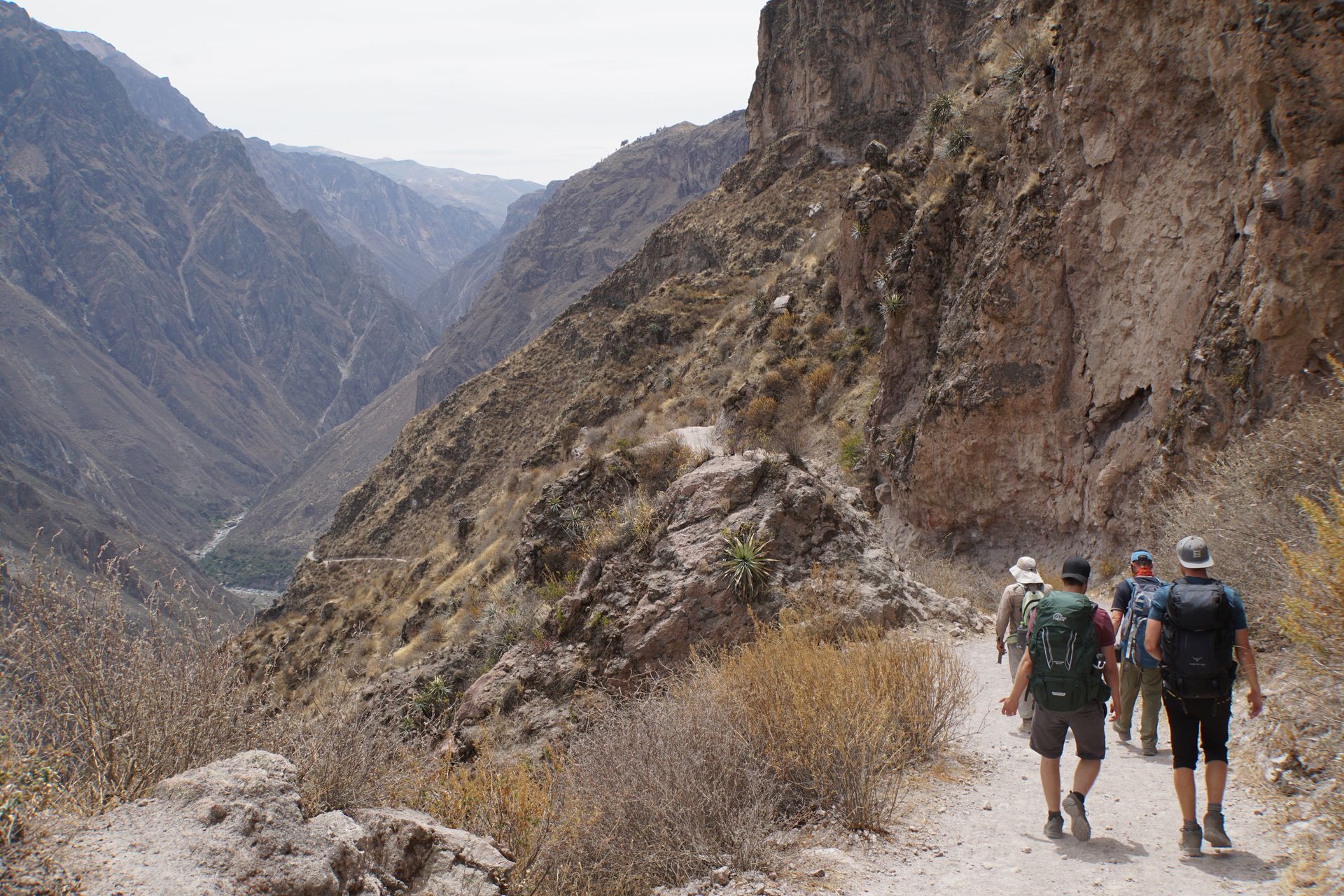
Descending into the canyon!
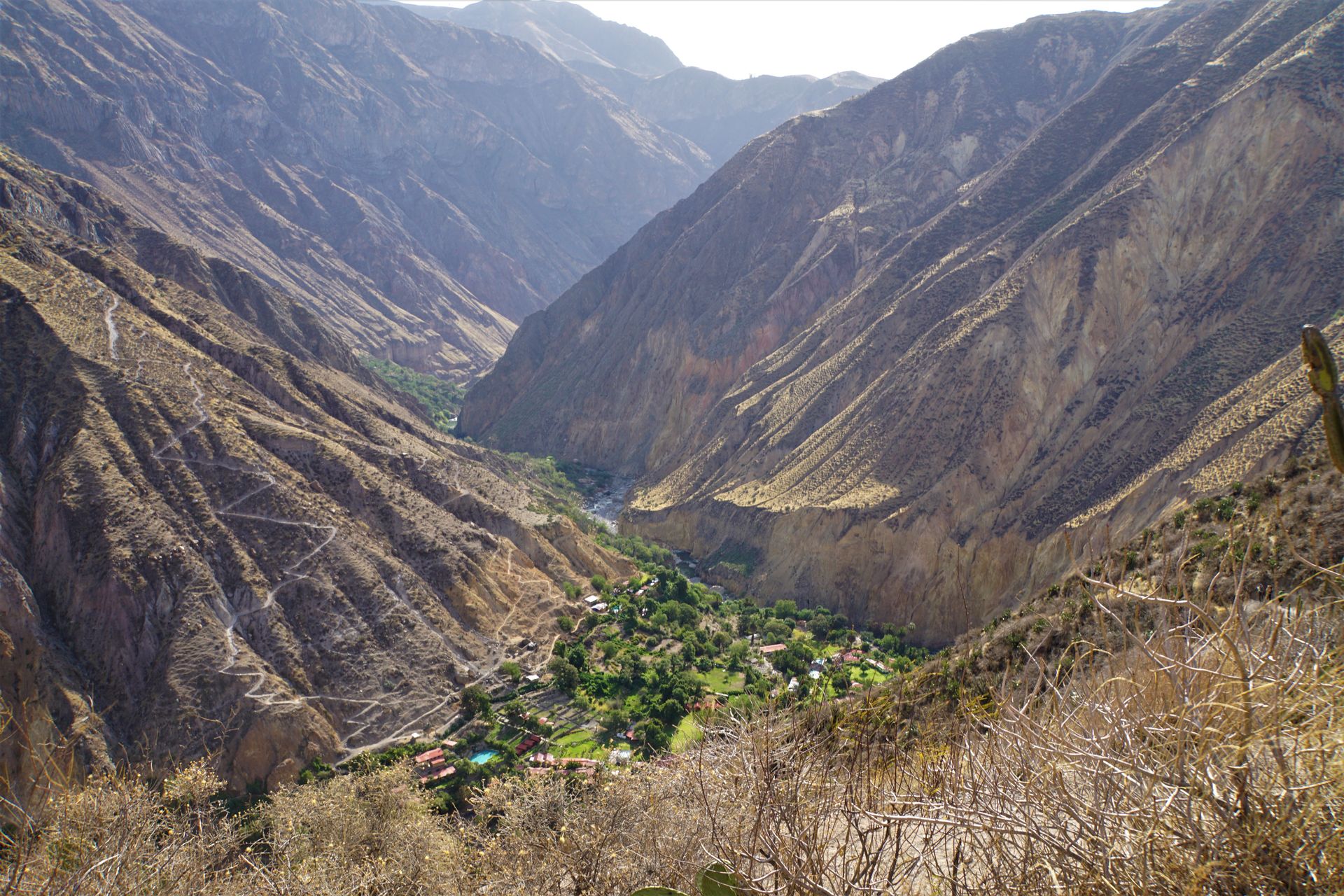
View of our destination
After a short night, the alarm clock rang at 4:00 am, because at 4:30 am, we started the ascent back to Cabanaconde. Within 2-3 hours (the guys were faster, Yvi stayed by my side When we reached the top, there was breakfast, and then we drove to the city of Chivay, about 2 hours away. There, we could relax our tired legs in thermal springs with temperatures of up to 38°C.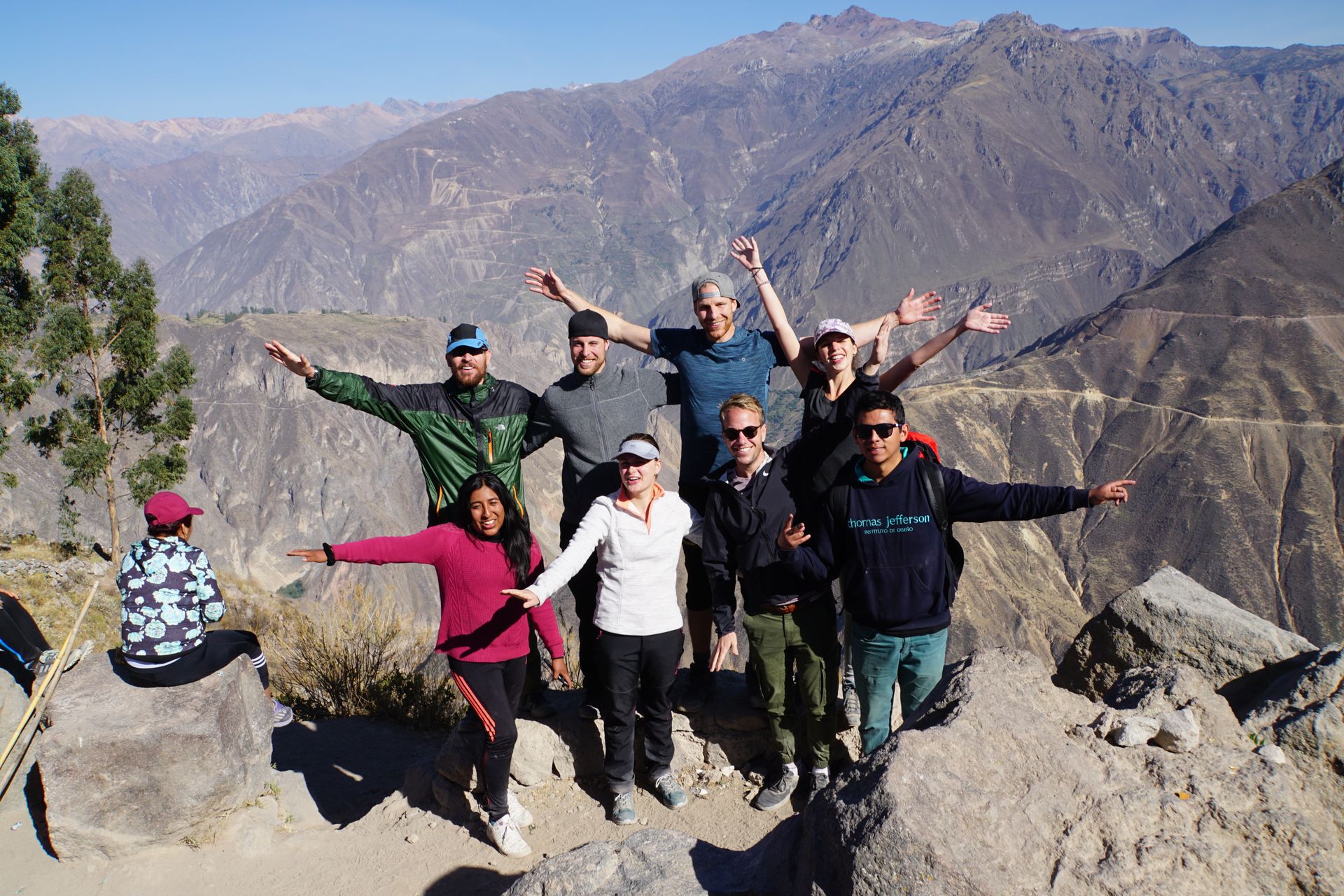
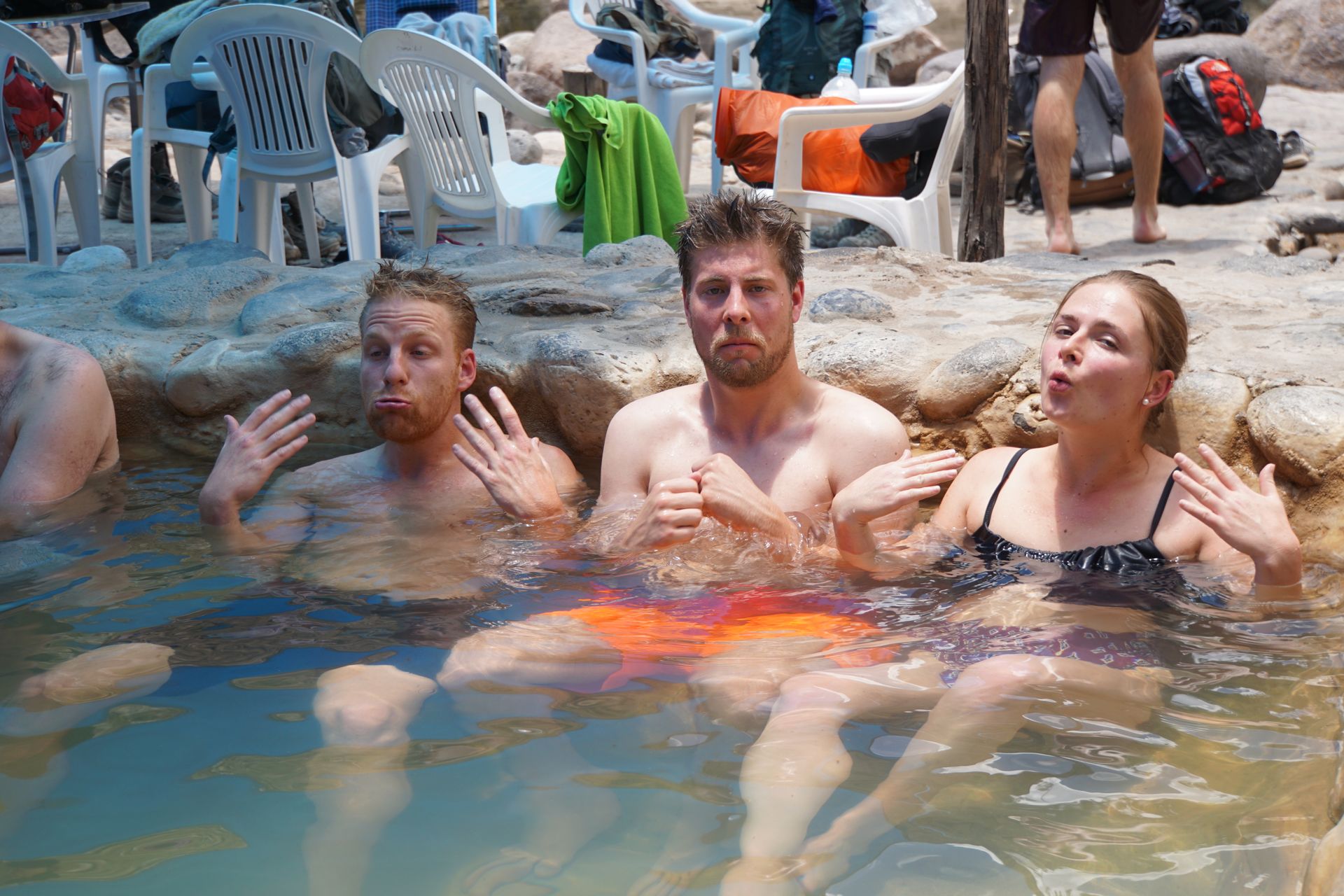

Abonnez-vous na Bulletin ya Sango
Eyano (2)
Martina
Tolle Bilder!!Hallo, wirklich tolle Bilder und wir freuen uns immer über euren Bericht. Es ist auch für uns super interessant und obwohl ihr soviele km entfernt seit, sind wir dabei. Dafür nach etwas mehr als 1 Monat ein herzliches Dankeschön.
Liebe Grüsse und Kölle Allaf Conny, Peter und Luca

Lapolo ya mobembo Pérou
